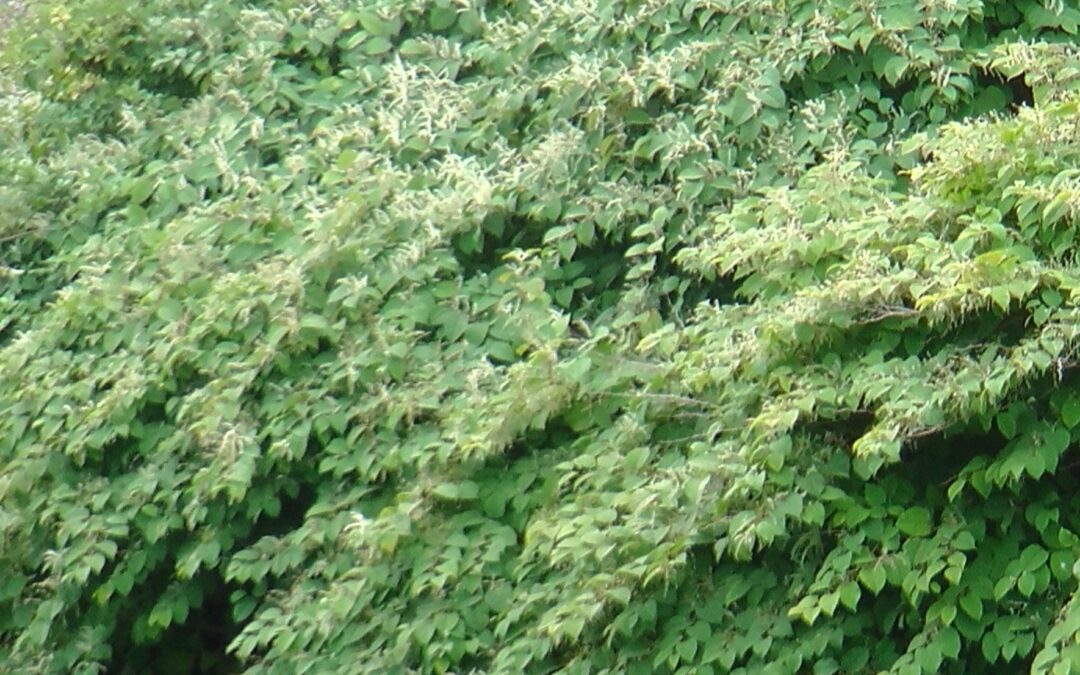The Future of Japanese Knotweed: Research and Development for Sustainable Management
At present, Japanese Knotweed is a major concern for environmentalists and property owners in many countries. This includes the UK, North America, and Australia. It is an invasive plant species that can grow rapidly, reaching heights of up to 10 feet. It can cause damage to buildings and infrastructure. Moreover, the plant is known for its deep and extensive root system that can penetrate gaps in concrete and tarmac. Additionally Its can regenerate from small pieces of stem or rhizome.
In this article, we will discuss the current research and development projects focused on finding sustainable management solutions for Japanese Knotweed.
The Importance of Research and Development
The control and management of Japanese Knotweed has become a significant challenge in recent years. With many areas experiencing an increase in the number of infestations. The plant can cause significant damage to both the environment and the economy. Therefore, it is crucial to find sustainable solutions to manage it effectively.
Research and development are essential for identifying effective management strategies. That can be implemented in the long-term. As the plant is highly invasive and adaptable, it is essential to stay up to date with the latest developments and strategies to prevent its spread.
Current Research Projects
Several research projects are currently underway worldwide aimed at finding sustainable solutions for Japanese Knotweed management. These projects include the following:
Biological Control
Biological control involves introducing natural enemies. These are small insects or pathogens, that can limit the growth and spread of Japanese Knotweed. This approach is being explored in various countries, including the UK, where the use of the psyllid Aphalara itadori is being tested as a possible biocontrol agent.
Chemical Control
Chemical control is a common approach used to manage Japanese Knotweed. However, it is not always effective and can be harmful to the environment. Therefore, researchers are looking for alternative chemical treatments that are more environmentally friendly and effective.
Mechanical Control
Mechanical control involves physically removing the plant from the ground. This method is useful for small infestations, but it is not always effective for larger areas. Researchers are exploring new mechanical methods, such as cutting and digging, to improve the efficiency of this approach.
Habitat Management
Habitat management involves altering the surrounding environment to limit the growth and spread of Japanese Knotweed. This approach can be effective in combination with other methods, such as biological control or chemical treatment.
The Role of Sustainable Management
Sustainable management is essential for ensuring the long-term control and prevention of Japanese Knotweed infestations. This includes the implementation of effective management strategies that are environmentally friendly and economically viable.
Sustainable management can also involve the use of public education programs to increase awareness of the risks associated with Japanese Knotweed and encourage responsible management practices.
Conclusion
Japanese Knotweed is a significant concern for environmentalists and property owners worldwide. However, with ongoing research and development, there is hope for finding effective, sustainable solutions for its management. Moreover implementation of sustainable management practices is essential for preventing the spread of the plant and ensuring a healthy environment for future generations.
If you would like more advice regarding Japanese knotweed contact Stephen on 07753682333
